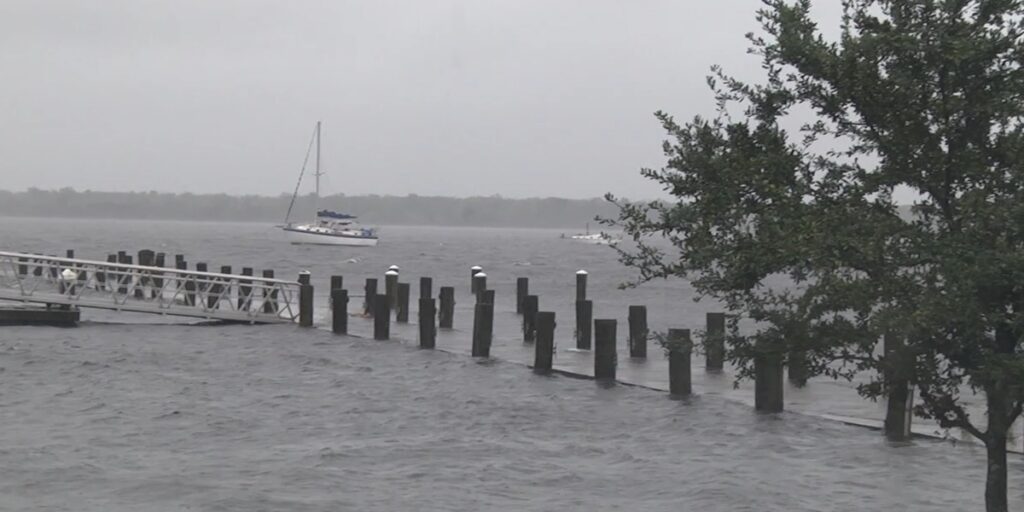Coalition urges FEMA to make changes amid rising flood insurance premiums

NEW ORLEANS (WVUE) – Hurricane Ian inundated southwest Florida with storm surge at a time when the National Flood Insurance Program is losing ground.
On Friday, (Sept. 30) the Coalition for Sustainable Flood Insurance which GNO Inc. leads issued a white paper that evaluated FEMA’s Risk Rating 2.0 methodology for determining premiums and affordability.
Michael Hecht is President and CEO of GNO Inc.
“Based on these increases around the country already 9% of NFIP policyholders, over 400,000 households, have dropped coverage. And a FEMA internal study suggests that 20% are expected to drop,” he said.
Still, Ian may help elevate the flood insurance debate.
“You’re going to see two effects of this one is going to worsen the overall flood insurance landscape financially but on the other hand it’s going to increase the political focus on it,” said Hecht. “Financially it’s a challenge but politically this action will probably give us a greater voice in D.C.”
In October, FEMA implemented Risk Rating 2.0 as a way to try to help the NFIP become more financially sound.
John Meder is head of Risk Consulting and Claims Advocacy at Risk Strategies, a national specialty insurance brokerage, and risk management advisory company.
He said in the areas affected by Ian it may be a while before all the damage can be assessed.
“We are in the early stages of assessing the damages that have taken place and it is a devastating and very terrible loss that they’re experiencing at this point. At this time, we’re working with a lot of the disaster recovery firms. We’ve got a number of teams that are on-site that had staged early on,” said Meder.
Still, it is clear floodwaters caused a significant amount of the known damage.
“Right now, the early indications that we’re seeing from this loss, again there are going to be significant losses, it’s primarily so far flood and we do have some wind losses that we’re seeing,” Meder stated.
The coalition’s report says according to FEMA data, Jefferson and Orleans Parishes have the largest number of single-family residence policyholders in Louisiana, and of the nearly 85,000 policyholders in Jefferson, 80% face an annual premium hike of up to $120. And 81% of policyholders in Orleans will face higher premiums because of Risk Rating 2.0.
Hecht says FEMA must act to improve the situation.
“One is that we need transparency, just like we do a credit score we need to understand what’s in the Risk Rating so that we can take actions to reduce our costs,” said Hecht. “The second thing is that we need is affordability because it’s not just flood insurance now, it’s your homeowners’ insurance, it’s auto insurance, it’s health insurance, it’s gasoline, its groceries and so all of these together is creating a cost of living crisis.”
The study’s recommendations:
–FEMA should disclose the factor by which premiums are changing for NFIP policies by ZIP code, county, and state and disclose the estimated RR2.0 full-risk premium and total policy costs
–FEMA should clearly disclose planned premium rate increase velocities in RR2.0 to remove uncertainty for insureds and allow households and housing markets to prepare for higher NFIP policy costs.
–FEMA should counter the known negative relationship between price and participation by adopting a low-rate annual premium increase plan until Congress authorizes an affordability framework.
–Legislators should carefully consider the limitations of affordability frameworks relying solely on income ratios to determine program eligibility. Housing burden should be an additional tool to target and equitably distribute assistance to areas with greater housing burdens
–Legislators and stakeholders should continue to evaluate affordability program design, pursue legislative enactment of an affordability program, and clearly communicate desired NFIP affordability public policy implementation outcomes to FEMA.
Property insurance rates were rising before Ian hit Florida. FOX 8 asked Insurance Commissioner Jim Donelon if he thinks Ian will worsen the overall insurance situation.
“It will but it depends on how bad it is. If it’s an Ida level event it won’t have a significant effect on our costs, if it’s a Katrina level event then it will,” he said.
In recent months, Louisiana has lost insurers due to failures or their pulling out of the state. Still, Donelon thinks a half dozen companies are ready to write new policies after this hurricane season ends.
“I’m cautiously optimistic, it will depend on how huge an event Ian ends up being from an insurance point of view but I don’t think it will deter, might drive prices up more than we’re expecting next year,” he said.
However, the companies are also doing business in Florida. “Probably all six of them are writing in Florida,” said Donelon.
And despite higher flood insurance costs, they urge property owners not to drop it.
“There’s a lot of advantages that come out of it, I know that the premiums are going up higher. I would highly encourage people to continue to purchase the coverage as we’re seeing now coming out of now this event with Hurricane Ian, this is a flood loss,” said Meder.
Donelon said, “The best insurance buy you can make is still significantly subsidized by the federal government National Flood Insurance Program, even after the implementation of Risk Rating 2.0.”
See a spelling or grammar error in our story? Click Here to report it. Please include the headline.
Copyright 2022 WVUE. All rights reserved.
This content was originally published here.




Responses